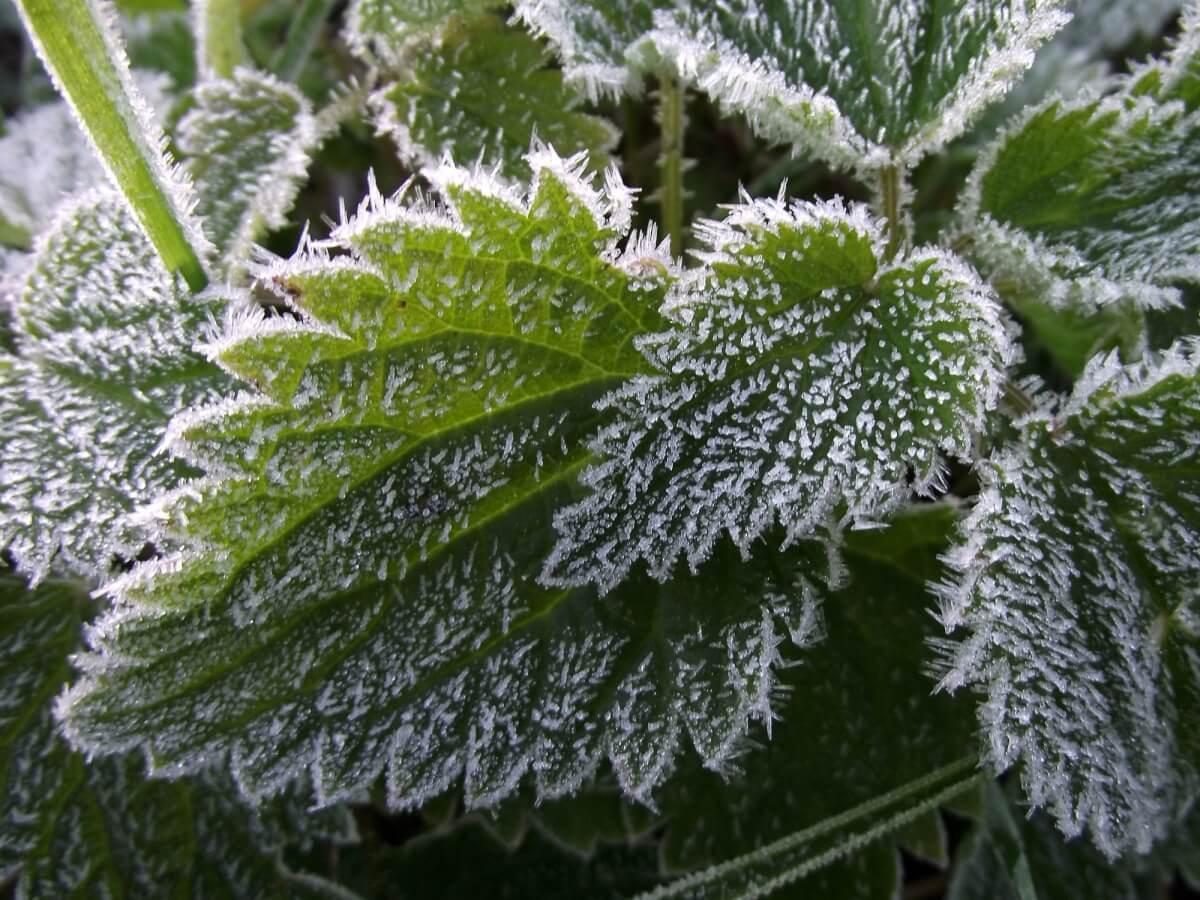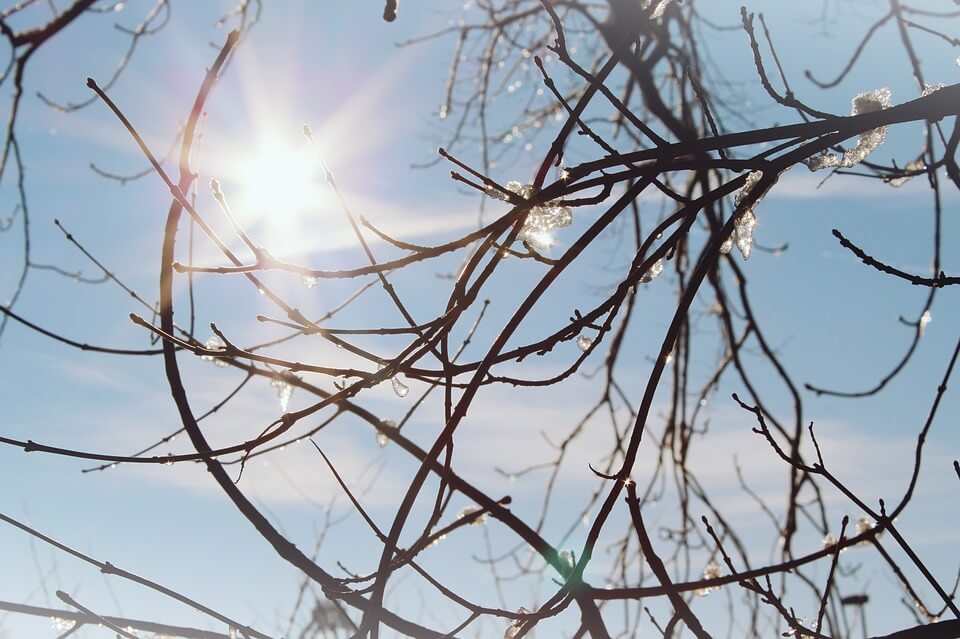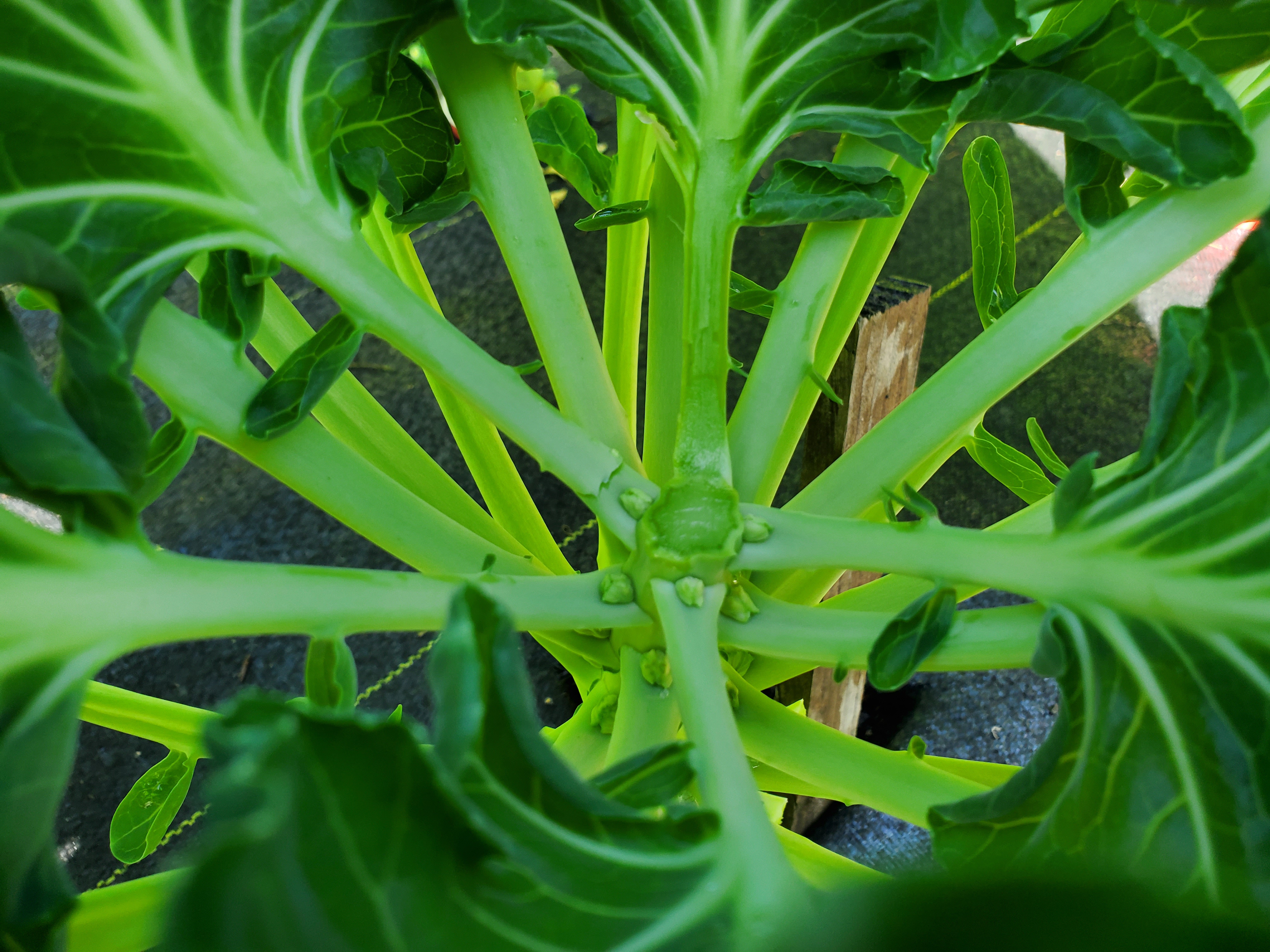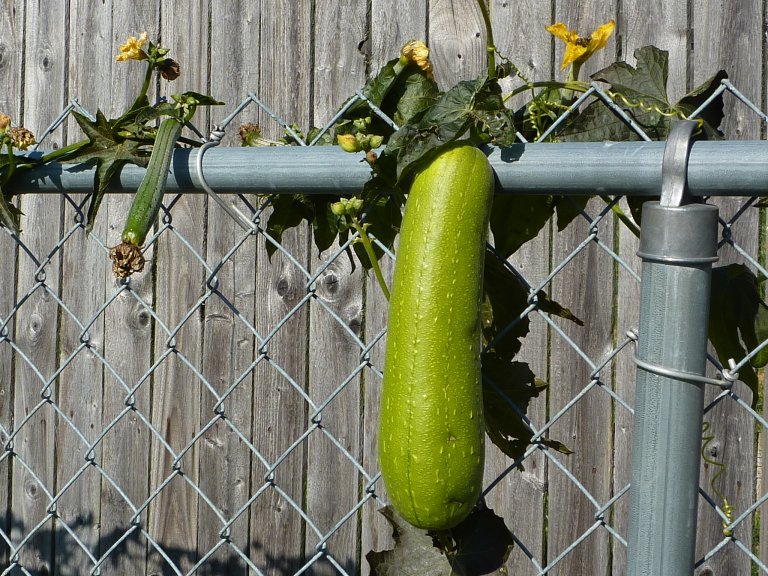Gardening in the interior of Alaska is a lot like living in the interior of Alaska.
It requires preparation, a mind for survival and attention to a lot of details. Challenging. But, not impossible for the right kind of people.

Fortunately, our growing season and summer temperatures in the Interior of Alaska are more than enough to grow most types plants. While it doesn’t usually get exceptionally hot, the interior does get a fair bit of warmth, sun and otherwise great gardening weather.
You won’t be growing pineapples here, but even some warm climate varieties of peppers and tomatoes will do well here!
This post includes some of our top tips and tricks for gardening in our subarctic environment!
Be Prepared For A Short Growing Season
By most gardener’s standards, the subarctic gardening season is shorter than most. While many enjoy four to six months, those of us in the north have much less time!
The last frost date in the Interior of Alaska is usually around June 1st. The first frost date is usually recognized as around September 1st.
Our growing season can be as short as 90 days, or as long as 110 days. Some years, even more! That is fantastic for where we live, if you think about it.
Some years we will see a frost later, others will come a bit sooner. It’s important to remember that these dates are averages and you need to keep a good eye on the weather around these dates.

Due to this short growing season, many types of plants must be cultivated indoors or in heated greenhouses. Growing your own plants from seed indoors is a more challenging technique, but it’s a great way to save money with gardening.
You can also:
- Purchase garden starts from a local nursery
- Utilize outdoor winter sowing techniques
It’s also a good idea to make sure every plant you want to grow can successfully mature within the growing season. In the Interior of Alaska, you can count on having between 90 to 110 growing days. Varieties should be selected to be successful within that growing season.
There are only a handful of plants that can be direct-sown in the subarctic that will be successful. You can find these direct sown plants on our seeding schedule.
Figuring Out When To Plant Your Garden In Alaska
Some plants are rather frost tolerant and can be planted quite early in the season.
We think of planting our garden in phases, based entirely around general temperature tolerance.
In mid-May, or two weeks before last frost, you can start thinking about planting most root based plants. These will be things such as potatoes, radishes, turnips and other cold tolerant root vegetables.

Also around this time, you can consider transplanting many cold tolerant veggies, such as kale, collards, Brussels sprouts and broccoli and a few other varieties that will deal well with the cold. Our seed schedule list identifies all the cold hardy plants that are eligible for this.
For the majority of your garden, though, definitely wait until dangers of last frost have cleared. This will typically be around the last frost date, sometimes earlier and sometimes later.
Pay attention to the weather and once evening temperatures are steadily above 45 degrees, that’s when it’s usually safe to plant your garden. It’s still possible to get late frosts, so be careful!
Warm climate and frost sensitive plants, such as tomatoes and peppers, are often best treated with a little more patience. Tomatoes can often go outside after the danger of frost has cleared, but low temperatures are still in the mid 40’s. Peppers, however, should be kept inside overnight until evening temperatures are at least 50 degrees.
The point at which you head out to plant is a very careful and calculated decision.
Again, last frost could be anywhere from the second week of May to June 1st, or even after that! We are eyeballing the 10 day weather forecasts and evening temperature predictions to see if we can get into our garden season early.
Early planting will give you an edge, but if you make the wrong decision, it could also wipe out your entire garden in one night.
If you really want to play it safe, take the last frost date as your planting date. Some even wait 5-10 days longer. This is usually a no-risk time frame, but you should still be keeping an eye on the weather.
[/bleed]Learn How To Force Your Garden To Maturity
Many plants can be “forced” into maturity. Using these techniques will significantly benefit your harvest,.
Physical Plant Manipulation
For example, with Brussels sprouts, it is imperative to top the plant about a month before your first frost. In the Interior of Alaska, this is around August 1st, but it can be any time around there.
Doing this will promote early sprout growth, offering the plant a good month and a half to develop its sprouts. Most Brussels sprouts are considerably long-season. We just don’t have that kind of time!

Similarly, you’ll want to top indeterminate tomatoes around the same time. It’s also beneficial to trim away much of the foliage, we usually aim for at the least the lower half of the tomato plant.
This will force these plants to produce your desired product. Ripe tomatoes!
Be The Bee, Pollinate Your Plants
You can also help plants along that need pollinators to be productive.
For tomatoes, peppers and most nightshade plants, this is really easy. Simply tickle the flowers with your fingers, every day or two. This process will virtually guarantee a pepper or tomato will grow. You don’t have to wait around for the bee to show up!
Other flowering plants, such as cucumbers and squash, are a little more difficult to pollinate by hand. These plants feature male and female flowers. As you might imagine, the male flower has to pollinate the female flower.
This can be done by hand to help your plants along. You have to gently touch the male’s stamen to the female flower, typically several times.
Alternatively, you can purchase parthenocarpic varieties that do not require pollination.
Always remember, the frost is coming and your plants don’t know it. Help them along with a few drastic measures!
Use Parthenocarpic Seed Varieties
This topic somehow alluded us as gardeners for a long time.
Without getting into the complexities of plant reproduction, many plants feature separate male and female flowers. Effectively, these are the plant’s reproduction organs. In botanical terms, these varieties are called monecious varieties.
These varieties require pollen to transfer from the male to female flowers in order to set fruit. This is typically performed by pollinators such as bees and flies.
With some plants, there are certain genetics that you can buy called parthenocarpic varieties. These varieties are similar to the monecious, however, are self pollinating.
These plant genetics significantly increase the likelihood of the plant fruiting. They can also be helpful in greenhouse and hoophouse scenarios where it might be less likely to receive pollinator visitors.
Parthenocarpic genetics have been most pursued in cucumbers, but is also seen in some varieties of summer squash. Both of these are commonly moneacious plants.
We have heard there are pathenocarpic winter squash, but to date, have been unable to track down any seed suppliers or reliable sources.
Figuring Out When To Take Down Your Garden
The thing with climate is that it’s fairly consistent.
It’s going to warm up around a certain time each year. It’s also going to get cold around a certain time each year.
Every year is different from the next, so there simply are no absolute days when something or another should be done.

That said, gardeners generally use first frost as a guideline for when they’ll start taking their garden down.
Often times, there are frost warnings in the garden groups on social media that frosts are inevitable, which means it’s time to start thinking about taking down your garden. Sometimes the local TV news or newspapers will also put out a warning.
You can also often tell when first frost will hit, just by looking at the weather. When you see an evening low temperature predicted to be about 34-35 degrees Fahrenheit, there will probably be an accompanying frost.
Your individual micro climate can have a huge influence on this, though.
The thing is, the first frost is the point when you need to start working towards shutting down. Not everything must be harvested by that point.
We advocate taking down your garden in phases, which brings us to our next point!
Harvest Your Cold Climate Garden In Phases
First frost is a flexible time, mainly because there isn’t imminent risk of extremely cold temperatures just yet. The immediate danger is frost, which will kill almost all plants that are frost sensitive.
We take advantage of this flexibility and harvest our garden in multiple phases. We prioritize our harvest based on hardiness.
Our general harvesting strategy looks something like this:
On Or Before First Frost:
- Cucumber
- Tomato
- Peppers
- Any other “warm loving” plants
Around Last Frost:
- All Herbs
- Squash (Plant will die, but fruit will tolerate a light frost)
- Onions & Other Allium
- Radish & other root veggies
- Any other “frost sensitive” plants
The Last Things & Up Until Hard Frost:
- All cold hardy plants (Kale, collards, brussels sprouts, broccoli, etc.)
- Carrots
Though there is some flexibility, it’s always important to remember that the subarctic winter is both imminent and inevitable at the end of the season.
The first thing we harvest is always our warm weather vegetables. We’ll usually harvest tomatoes, peppers, cucumbers, eggplants and any other warm climate plants just before first frost. These are the most vulnerable of plants we grow.
From there, we like to get our squash harvested. These plants are also not frost tolerant. The first frost will kill the plant, but it won’t destroy your harvest. That said, you need to try and harvest these things just before the first frost or immediately after the first frost.
Some things can be left well into the first few frosts. Most root vegetables are quite frost tolerant. As are kales and most brassicas. Carrots will even improve their flavor if left to experience a few frosts.
The important thing is to get all the garden harvest and chores done before the real cold moves in!
If some of your frost sensitive plants needs a bit of extra time, you can often times throw some frost (or remay) cloth over them and get another week or two of growing time. This is great when you’re really trying to push our season to the edge. It is especially helpful for things like squash that often need just a bit more time.
Just keep in mind that the shoulder season is not the most optimal for growing. Miracles are unlikely to happen. If something looks like it won’t finish, it probably won’t in the extra few weeks of fall. That’s OK and what next year is for.
That’s All We Wrote!

Having a good time? We have an ever growing list of insightful and helpful subarctic & cold climate gardening articles, waiting out there for you!
- Cold Climate Gardening Basics 👉
- Growing Your Garden From Seed Indoors 👉
- Advanced Cold Climate Gardening Techniques 👉
- Plant Specific Cold Climate Growing Guides 👉
- Subarctic Perennial Food Forests & Foraging 👉
- Indoor Garden Lighting & Grow Rooms 👉
- Greenhouses & Temperature Control 👉
- Harvesting & Food Preservation 👉
- Solving Cold Climate Garden Problems 👉
- 1 Minute Reads On Tons Of Garden Topics 👉
FrostyGarden.com is 100% ad-free and we do not use affiliate links! This resource is voluntarily supported by our readers. (Like YOU!) If we provided you value, would you consider supporting us?
